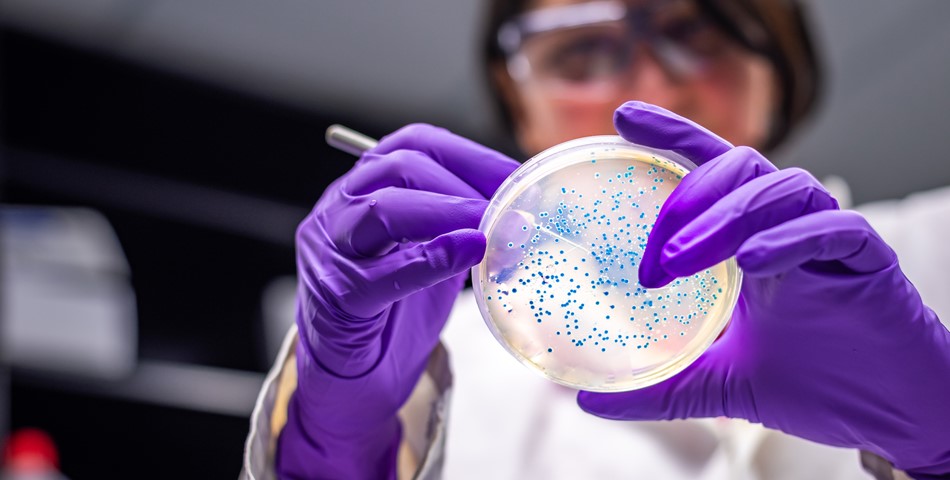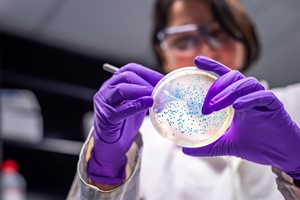COVID-19 is widespread and its influence is not restricted to a single industry or region. The viral outbreak has changed the way we live and its effects are expected to be long-lasting. During this period, industries that can minimize person-to-person contact are expected to thrive, while those dependent on high contact, such as travel and tourism, are hit the hardest. The COVID-19 outbreak has created lasting impressions in the F&B (Food & Beverage) industry with mixed results. The GCC F&B industry is at the cusp of change, and products and ingredients that promote health and wellness are expected to gain importance.
The change in the outlook of the F&B industry can be attributed to various push and pull factors, such as realigning of customer preferences and purchasing behaviors, growing incidence of lifestyle diseases and disorders, and increasing interest from regulatory authorities to promote wellness concepts. The incidences of obesity, cardiovascular diseases and diabetes are on the rise in the GCC region, especially in KSA and UAE. This has resulted in increasing pressure from government authorities on F&B brands to focus on food products with higher nutritional and dietary value than those that are commercially available. The continued focus on salt-, sugar-, and fat-reduction strategies can directly influence the type of products manufactured and ingredients used for product development.
F&B brands are adopting varied approaches to meet the health and wellness requirements of end consumers. Already, there is an influx of healthier options available in the market, and importers and brands are keen on increasing their portfolios. The F&B industry within the GCC region is considered an attractive option for expansion and entry for main global brands, and key focus is on the introduction of healthier food products with higher nutritional and dietary value.
Many technologies are being considered by market players to increase the dietary and nutritional value of products, especially microbiome technologies. Microbiome technologies have gained steady interest for the past five years, and continued research efforts and an ever-expanding technology portfolio make it a key technology area of interest for the F&B industry. Microbiome is not new to the consumer. Various forms of microbiome have been a part of dietary habits of people across the globe, whether in the form of fermented non-alcoholic beverages, fermented breads and batters, etc. From an industry classification view, the key technology portfolio within microbiome includes:
- Prebiotics: Non-digestible ingredients such as dietary fibers that enable the growth of beneficial microbes in the intestine, such as fructo-oligosaccharides, inulin, galacto-oligosaccharides, etc.
- Probiotics: The use of live microorganisms such as FOS, GOS, etc.
- Synbiotics: A combination of prebiotics and probiotics.
- Postbiotics: Soluble factors (products or metabolic byproducts) secreted by live bacteria or released after bacterial lysis, such as enzymes, peptides, polysaccharides, cell surface proteins, and organic acids.
Each category has varied dietary properties and beneficial effects when used in F&B formulations. For example, bacterial cultures can be introduced as active ingredients to increase GI (gastrointestinal) health, general well-being, weight management and energy. Currently, most microbiome are incorporated and sold as dietary and wellness supplements in over-the-counter products. An added advantage of its use in food products is the easy transition to allied and adjacent industries such as therapeutics and diagnostics; this can be a key growth enabler.
The use of microbiome will also resonate with the consumers who demand “natural,” “bio-derived” ingredients. As beneficial microbes produce a number of cofactors and vitamins, such as vitamin B3 (niacin), B5 (pantothenic acid), B6 (pyridoxal phosphate), B7 (biotin), B9 (folate), B12 (cobalamin) and vitamin K, among many others, they can be considered essential nutritional compounds when used for the manufacture of food products. Market leaders such as Danone and Yakult already have an established presence in the GCC region with an opportunity to expand their probiotic portfolios. Others are also investigating the feasibility of incorporating aspects of microbiome technologies in their products in line with the health and wellness trend.
Ongoing research studies that can establish the effect of microbiome on gut health and overall health when used in certain nutritional formulations can help satisfy the questions of an educated and well-informed consumer. Increasing acceptance of OTC products—prebiotics and probiotics—can help build trust in microbiome-based F&B products.
While the advantages of using microbiome technologies in the F&B segment are numerous and many market participants are undertaking active research efforts, the commercialization and adoption are still focused in certain niche segments. Apart from a lack of clear regulatory guidelines and standards for the use of microbiome in the F&B industry, the lack of widespread clinical trials to establish claims is also playing a key role in hindering adoption. Additionally, the inability of certain bacterial strains to survive in an extreme environment and high production costs also hinder commercialization. Another challenge that impacts the increased use of microbiome is the need for specialized supply chain and cold chain facilities that might not be feasible for small-scale and medium-tier companies that are interested in incorporating microbiome strains and cultures into their products, not only to promote nutritional benefits but also as a possible tool for product differentiation.
New approaches to establish efficacy, develop customized robust strains with increased durability, and create effective end-consumer engagement strategies can help increase the use of microbiome in F&B products. Collaborative research efforts from microbiome (probiotic) manufacturers, F&B companies and even players in the pharma space can help extend the use of microbiome in the F&B industry and contribute to bridging the overlaps between F&B, OTC and nutritional supplement sectors.
Aarthi Janakiraman
Research Manager, TechVision
Frost & Sullivan
ww2.frost.com














